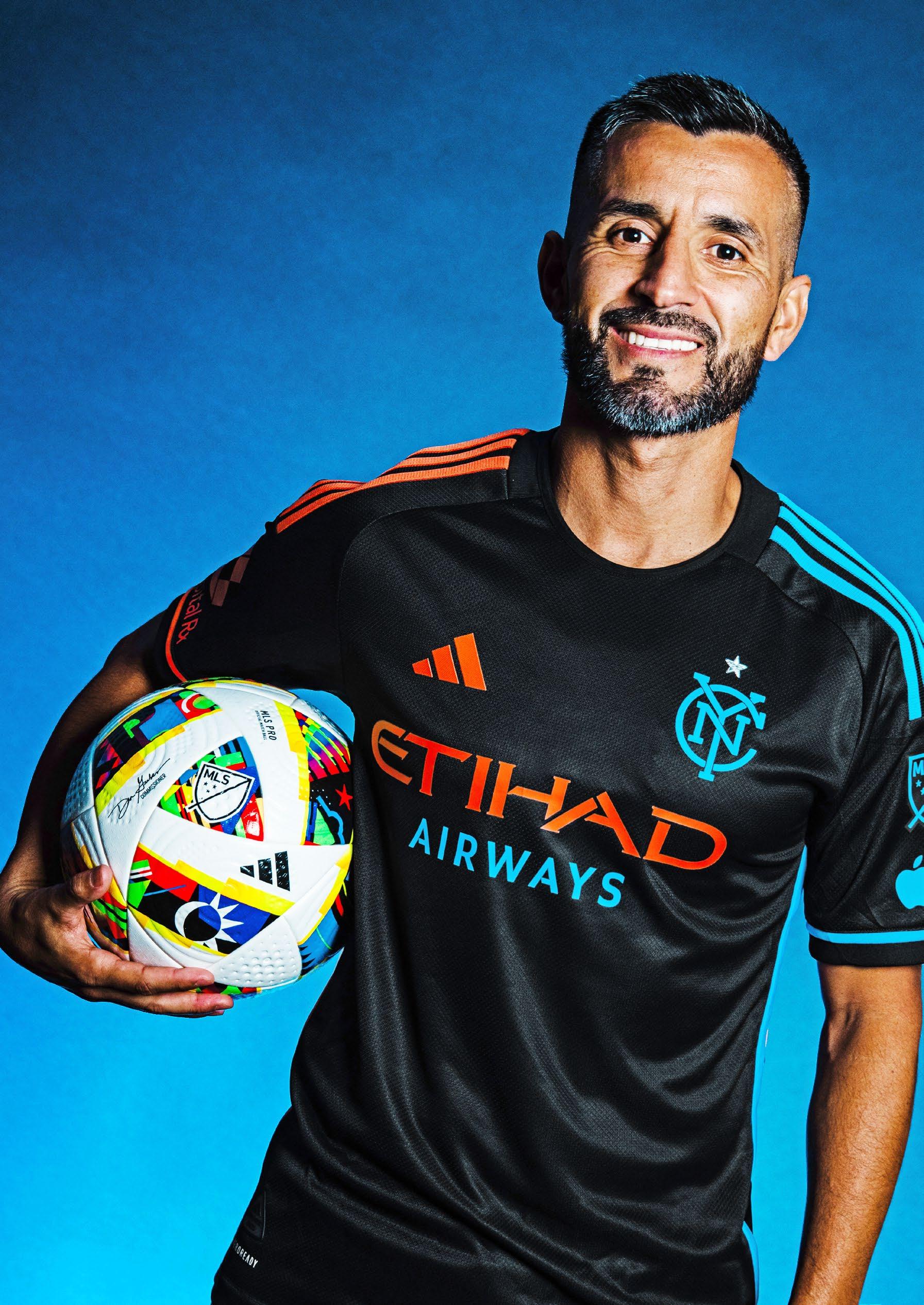

Water Playbook
OFFICIAL WATER TECHNOLOGY PARTNER OF NEW YORK CITY FOOTBALL CLUB
United Nations Sustainable Development Goals

Goal 6 : Clean water and sanitation for all
In 2015, the world set a target to tackle our global water challenges by 2030! We’re already halfway… and we’re not where we need to be. So we all need to do more. If we all take small actions… if we work as a team, we can turn this around. The game is always won in the second half, so it’s all to play for.
Be a Water Champion
the Earth is water only 3% is drinkable
The water on earth today is all we have, and we can’t produce more.
As the world’s population increases, demand is outpacing supply, creating water shortages.
Almost 1 in 10 people worldwide don’t have clean water close to home.
of the world’s water waste is discharged untreated into the environment. 2 people are at risk of being displaced as a result of drought by 2030. 3 of the global population lack access to safe drinking water. 1
Being water responsible starts at home. By making small changes around the house and encouraging family and friends to do the same, you can make a positive difference in your community.
Home Maintenance At home
Monitor your water bill for unusually high usage, as your bill and water meter are tools that can help you detect possible leaks and track water usage.
Check your property for leaks in internal plumbing, such as fixing leaky taps. Also, inspect outdoor taps, pipes, and hoses regularly.
Insulate pipes to prevent freezing or bursting during colder months.
Laundry Pets
Wait until you have a full load to do your laundry.
Pre-treat stains to avoid washing clothes multiple times.
Reduce frequency of washing by wearing clothes more than once.
When buying a washing machine, consider the water efficiency ratings.
Wash your pets outside in warm weather to save water and nourish your lawn and plants at the same time.
Instead of pouring your pet’s old water down the sink, use it to water your garden or houseplants.
At home
In the bathroom
Turn off the faucet while brushing your teeth or shaving.
Install water-efficient showerheads and faucets.
Flush only bodily waste and toilet paper to prevent blockages that can cause waterway pollution.
Add a few drops of food coloring to your toilet tank. If the color appears in the bowl without flushing, you could have a water wasting leak.
Garden / outside
Harvest rainwater from your roof with gutters, downpipes and collection barrels - this can be used for plants, trees and drinking water for animals.
Clean driveways, sidewalks, and steps with rainwater and a broom instead of a hosepipe.
Water plants using rainwater from a watering can rather than a sprinkler or hose.
In the kitchen
Wash dishes in a bowl instead of running the faucet continuously.
Cook with minimal water and a lid to save water.
Keep a jug of water in the fridge for cool drinks instead of running the faucet.
Defrost food overnight in the fridge instead of using running water.
Water early in the morning or late in the evening to minimize evaporation losses.
Use mulch or gravel on garden beds and borders to retain water and reduce evaporation.
Select plants suited to hot/dry conditions to minimize water needs.

#WaterFacts:
● Households worldwide waste about 2 trillion gallons of water annually. 4
● A garden hose or sprinkler can use almost as much water in an hour as an average family of four uses in one day. 4
● 5 gallons of water can be wasted, when leaving the faucet running while brushing your teeth. 4
● A 5-minute shower uses half as much water as a bath. 5 4.
At work
Implementing water-saving measures at work promotes environmental sustainability, corporate social responsibility, and cost savings.
Printing double-sided reduces paper usage, contributing to water conservation in the paper production process.
Start each meeting with a water conservation and sustainability tip.
Bring a reusable water bottle and cup to work to minimize single-use materials and reduce the need for washing multiple cups and glasses.
Encourage colleagues to run dishwashers only when they are fully loaded.
Turn off air conditioning and heating when not in use, as both systems consume water. Share the details of the alltoplayfor.com website with colleagues so they can learn how to take action and play their part.
At work
As
a business, you could...
Conduct a water audit and implement monitoring solutions to assess and optimize your water usage.
Provide trash cans in bathrooms for non-flushable items to prevent water pollution.
Engage employees in crafting water conservation plans and practices that align with the company’s culture and values. Recognize and reward employees who actively contribute to watersaving initiatives.
Install water-saving devices like faucet aerators in restrooms and kitchens to reduce water flow without sacrificing functionality.
Perform regular and systematic maintenance checks.
Consider installing waterless urinals in restrooms to eliminate the need for flushing and save a significant amount of water.
Explore and implement water recycling and reuse strategies.

#WaterFact:
● Sensor faucets conserve 70% more water compared to manual faucets. 6
At play
Many leisure activities not only occur directly in or on water but also rely on water to sustain their operations.
When out and about, carry a reusable bottle to avoid purchasing drinks in single-use containers, thus reducing the need for recycling and conserving water.
Be conscious of personal water usage during leisure activities, whether showering or washing hands after playing sports.
Out and about Car washing Community activity
Wash your car on a lawn or gravel area to allow water absorption instead of it running into storm drains.
Use a bucket instead of a running hose.
Opt for car cleaning products that are water-soluble and non-toxic to our environment.
Plant trees in suitable locations within your local community to benefit the watershed.
Organize regular clean-up events along local waterways to help improve water quality.
Arts and crafts
Use water-based paints as these contain less contaminants when rinsed off brushes and equipment.
Whenever possible, recycle the water used for cleaning art supplies.
Exercise At play
Encourage your sports team to reuse and recycle equipment at the end of each season, and consider using dope dye materials that require less water and produce fewer contaminants.
Recommend implementing water-efficient irrigation systems for sports fields.
Use “Reef Safe” or “Reef Friendly” sunscreen when swimming in the sea to minimize water pollution.
Fishing
Do not leave litter near lakes or rivers. If you spot any while fishing, pick it up and dispose of it in a trash can.
To reduce water pollution and protect marine biodiversity, ensure all equipment is free from contaminants before entering a waterway, and be cautious not to transfer water from one source to another.
Camping and hiking
Choose camping sites that enforce water conservation practices and regulations.
Eat directly out of the pans you cook in to save water used for washing up.
Use hand sanitizer in appropriate situations to reduce water consumption.
Adhere to “Leave No Trace” principles to minimize water and pollution impact.

#WaterFact:
● Approximately 3.5 million people annually become ill after swimming in natural water bodies contaminated by water pollution. 8

